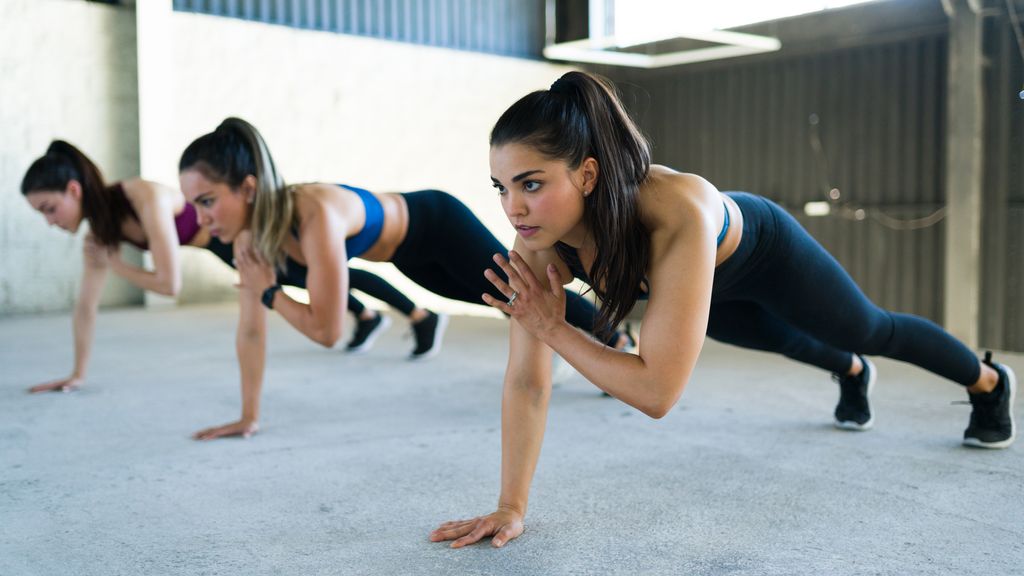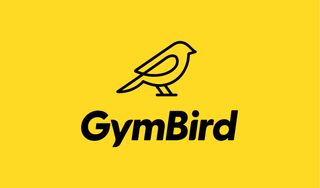
HIIT is a popular workout trend that attracts many individuals because of its short time commitment and physical benefits. It’s a quick and easy way to increase your heart rate and build strength without the time commitment of other workouts.
Introduction to HIIT
HIIT stands for “high-intensity interval training.” Throughout a HIIT workout, you’re alternating between intense bursts of physical activity that spike the heart rate and short periods of low-intensity movements.
The movements within a HIIT workout are often a mix of cardio, bodyweight exercises, and strength training.
When building a HIIT workout, you want most of your movements with low-intensity exercises to help you transition between high-intensity activities. High-intensity actions include sprinting on a treadmill, high knees, or mountain climbers, quickly increasing the heart rate to about 80 percent.
Low-intensity activities help the heart rate slow down, such as cycling at a casual pace, body weight squats, marching knees, or slowly lifting weights.
It is possible to overdo HIIT workouts. So while HIIT may provide many physical benefits, you want to supplement them with low-intensity exercises throughout the week.
Depending on how often you work out, you can try to implement HIIT one to two times a week between longer, lower-intensity exercise days like yoga, weight lifting, or jogging.
GymBird Beginner Fitness Program
Best for beginner at-home routine
Access our 6 week at-home program, gain a strong fitness foundation, and start feeling your best all for less than the cost of a single month at a gym! Developed and demonstrated by certified personal trainer with over ten years of experience.
Instant access to 6-week workout plan
Demonstration videos for proper form
At-home workouts - minimal equipment needed
HIIT Benefits
There are many benefits to HIIT workouts, from how the exercises can positively affect your body to its convenience. A few top reasons people choose HIIT workouts are:
- HIIT fits into the busiest schedules
- You don’t need equipment for HIIT workouts
- HIIT targets many muscle groups for improved muscular endurance
- HIIT improves blood flow and may lower blood pressure
- HIIT can increase your metabolic rate
Benefits of HIIT
There are many health and physical benefits to incorporating HIIT workouts into your routine.
1. HIIT fits into the busiest schedules
One of the primary reasons HIIT workouts have grown in popularity in recent years is that you can get a full-body workout in 30 minutes or less.
The goal of a HIIT workout is to keep your body moving for the entirety of the training. Unlike longer workouts, where you have a rest period between sets, HIIT is back-to-back workouts for 20 to 30 minutes.
Instead of the no-work rest period, you use low-intensity movements as a form of rest to help the body recover.
2. You don’t need equipment for HIIT workouts
Not only are HIIT workouts quick, but they don’t require equipment, and you can do them at home.
You can try a bodyweight workout where you’re alternating between high-intensity bodyweight exercises like high knees or jump squats and low-intensity movements like alternating lungs and glute bridges.
Another option for an equipment-free HIIT workout is running. Run for two to five minutes at a high pace, then slow down to a jog or walk for one minute.
You repeat this sequence three or four times for a complete HIIT workout.
You can also break up the running with a few bodyweight workouts to target different muscle groups.
3. HIIT targets many muscle groups for improved muscular endurance
Many HIIT workouts are full-body, which engages and strengthens many muscle groups.
Some studies show that HIIT can result in small muscle growth, while other studies suggest HIIT improves the muscles’ ability to use oxygen, resulting in better muscular endurance.
These studies mean that people may see quicker results in building muscle and feel less muscle fatigue when working out, even though the workouts are as long as traditional interval or endurance training programs.
4. HIIT improves oxygen and blood flow
Your body needs blood and oxygen to function. Your heart pumps blood through the circulatory system to deliver oxygen to your muscles, and the efficiency in which your blood and oxygen flow can improve with HIIT training.
A recent study shows that blood flow to the brain increased after a single HIIT session, making it a time-efficient alternative to long-duration, low-intensity workouts to provide participants with similar results.
Another study found HIIT to improve the heart’s ability to deliver oxygen in adolescents more than traditional forms of exercise.
5. HIIT can increase your metabolic rate
Your body burns calories when working hard but also burns calories while performing essential functions such as breathing and processing nutrients.
The speed at which your body burns calories while performing life-sustaining operations is called your metabolic rate. Several studies show HIIT increases the body’s metabolic rate for hours after exercise.
Get our fitness newsletter
Stay on track with your fitness goals and get inspired! Sign up for the GymBird newsletter for twice-monthly expert fitness and nutrition tips.
How to Prepare for HIIT
If you’re new to HIIT it’s important to adequately prepare to ensure a safe and effective HIIT workout.
Begin with a warmup
No matter what workout you have planned, HIIT or otherwise, you always want to ensure you’re spending five to ten minutes warming up your body to reduce the risk of injury.
A proper warmup should include a mix of low and mid-intensity workouts, like jumping jacks or punch jacks, with dynamic stretching.
At the end of your warmup, you should have a slightly increased heart rate, and your body should feel loose and ready to move.
Plan ahead
Before you jump into your HIIT workout, plan what you’re going to do to ensure you have the necessary equipment and space.
Knowing what you’ll work on ahead of time can also help inform your warmup to ensure you’re warming up muscles you’ll use the most.
Many gyms offer HIIT classes if you’re not comfortable planning your workout. Group fitness instructors lead these workouts and explain how to perform all the exercises safely.
You can also find HIIT workouts on YouTube or Instagram that you can do at home or at a gym.
Keep it simple
High-intensity interval training does not mean the workout needs to be complex. When you’re starting HIIT, keep it simple.
Begin with a 20-minute session that uses five to six high-intensity movements and one to two low-intensity ones.
As you get comfortable with HIIT, you can aim for longer sessions and more intricate exercises.
Focus on your form
HIIT workouts risk injury, especially if you’re using weights. Even though the goal is to push yourself and increase your heart rate, it’s okay to take things slow to focus on your form.
Proper form reduces the risk of injury and ensures the movement is effective.
If you’re unsure how to execute an exercise correctly, you can work with a certified personal trainer or join a group fitness class to gain tips and guidance on your technique.
Cool it down
Once you finish your HIIT workout, take five to ten minutes to cool down and let your body recover.
Cooldowns, like warmups, help reduce the risk of injury and allow your heart rate and blood pressure to return to their resting rate.
Your cooldown can incorporate low-intensity movements, like a short walk, static stretches, or slow-flow yoga.
Allow rest between HIIT workouts
HIIT workouts are great for the body, but HIIT shouldn’t be your only exercise, multiple days a week.
HIIT is taxing on the body, and you should limit your HIIT workouts to one to two days a week so your body can efficiently recover. Too many HIIT workouts in a short period can lead to fatigue, muscle strains, sprains, and other injuries.
Is HIIT Right for You?
HIIT workouts are ideal for moderately fit individuals who can schedule lower-intensity activities between HIIT sessions.
If you already have a regular running, cycling, swimming, yoga, or weight training routine, including a HIIT workout once or twice a week is a great way to improve your muscle endurance, blood flow, and metabolic rate.
HIIT can provide many physical benefits, but too many back-to-back high-intensity workouts can burn out the body and lead to opposite results.
Many of the movements in HIIT are high-impact, meaning they stress the muscles and joints. If you experience strength or joint discomfort or have arthritis, HIIT may not be your best workout option.
Before starting any new workout routine, it’s always best to consult your doctor. Talking with your doctor is especially important if you have medical conditions that may affect your body during a workout.
Conclusion
HIIT is excellent to include in your workout routine, especially on days when you want the benefits of a high-intensity endurance workout in 30 minutes or less.
As with any activity, it’s essential to warm up and cool down to reduce the risk of injury.
If you’re unsure where to start with HIIT, sign up for a group fitness class or work with a certified personal trainer to develop a HIIT workout that’s right for your body and fitness goals.




